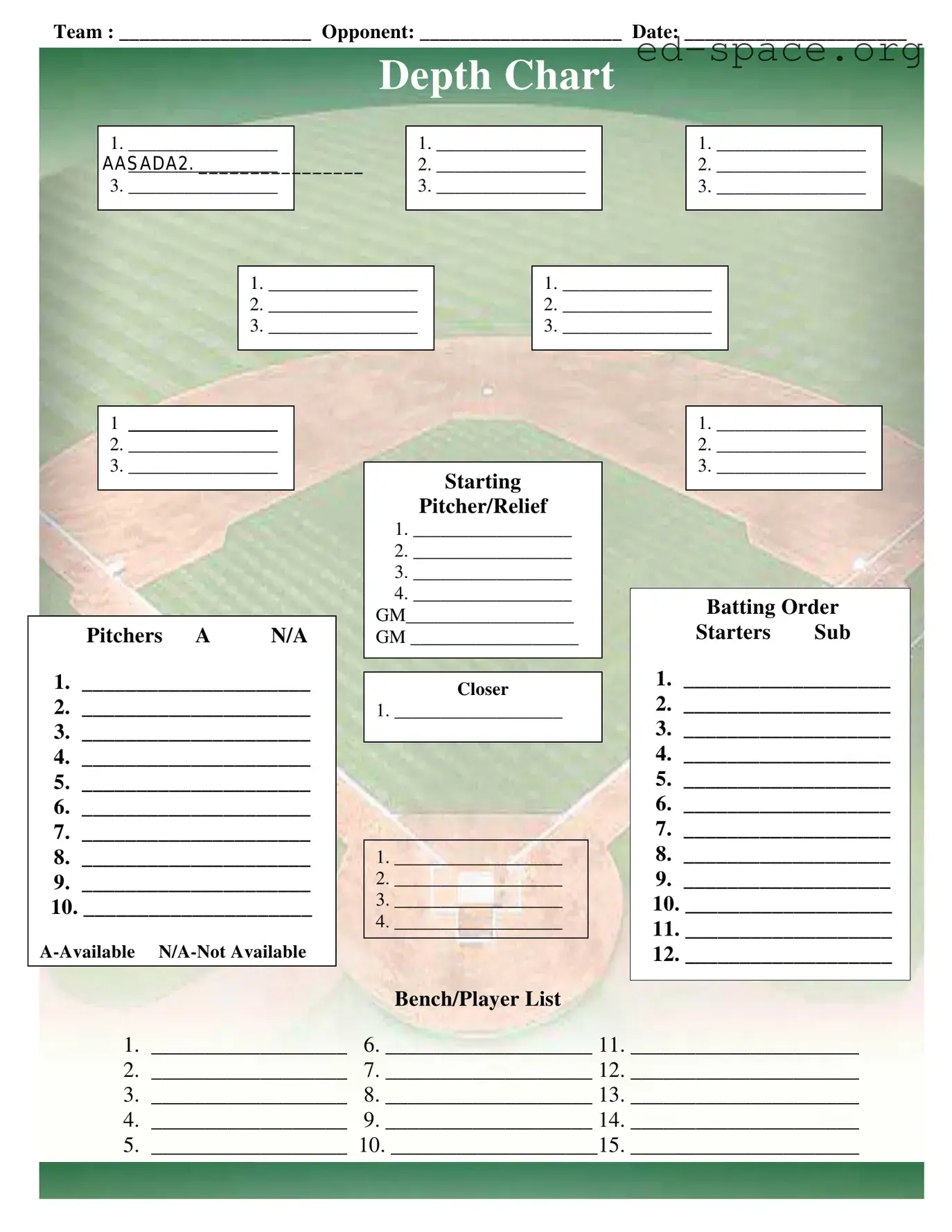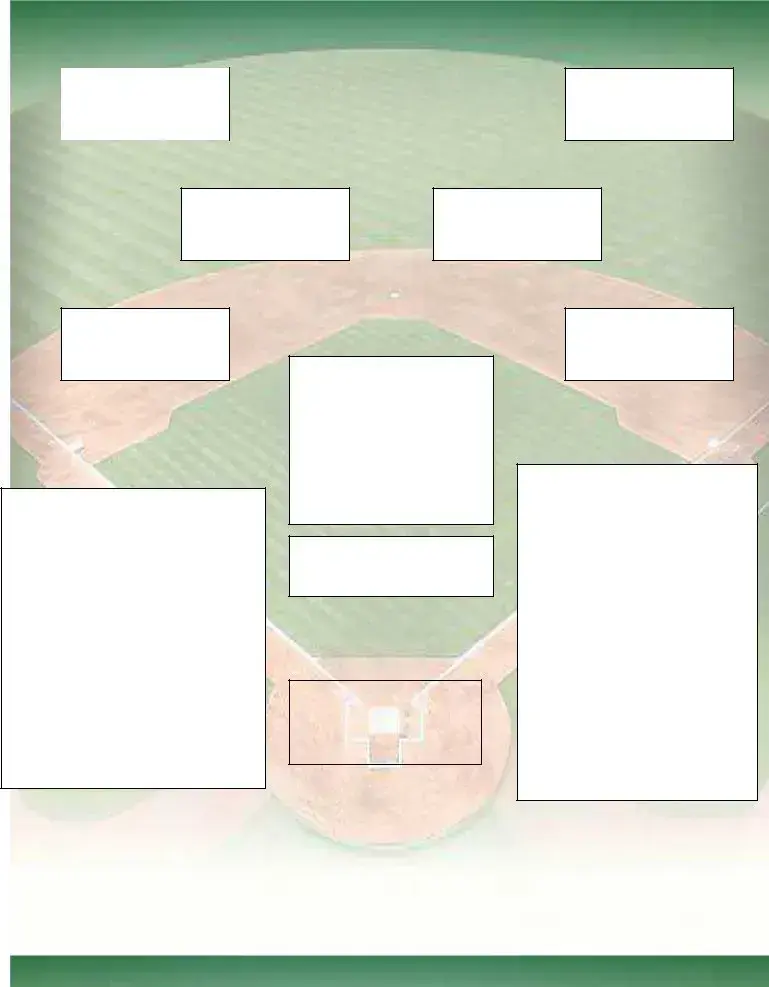What is a Baseball Field Lineup form?
A Baseball Field Lineup form is a structured document used by baseball team managers to outline their team’s lineup for a specific game. It details the starting players, their positions, batting order, available and unavailable pitchers, and substitutes. It also includes information about the opposing team, date of the game, and a depth chart for various positions. This form is a crucial tool for strategic game planning and ensuring organized team play.
How do you fill out the team and opponent sections on this form?
To fill out the team and opponent sections, simply write the name of your team next to "Team" and the name of the team you are playing against next to "Opponent." Be sure to also include the date of the match in the designated "Date" section. This information establishes the context of the game and helps in organizing records and strategies specific to each matchup.
How should the depth chart be utilized?
The depth chart sections are designed for listing players based on their position in the team’s strategic layout. You should list players from the most preferred or starting position down to their backups in descending order of preference or strategic importance. This organization assists in quickly identifying replacements due to in-game changes, such as player injuries or strategic substitutions. Each section typically represents a different position or role within the team, allowing for thorough planning.
What is the purpose of the 'Pitchers A/N/A' section?
The 'Pitchers A/N/A' section is meant to categorize pitchers into those who are available (A) for the game and those who are not available (N/A). It helps the management to keep track of the team's pitching resources for the game. By listing the pitchers accordingly, the team can strategize their pitching lineup efficiently, ensuring that they have a solid plan for both starting and relief pitchers. This organization is vital for managing player fatigue and strategizing against opponents.
How is the batting order determined and listed?
The batting order is determined based on the team’s strategy and the players’ batting skills and consistency. Players are listed from the leadoff batter (1) to the last batter (9) in the order in which they will bat during the game. This section also includes substitutes (subs) that can be rotated into the batting order. The order is a strategic component of the game, as it dictates the sequence of players who will bat, aiming to maximize the team’s scoring opportunities.
Can you explain the significance of the 'Bench/Player List' section?
The 'Bench/Player List' section is essential for listing all players not included in the starting lineup or depth chart, essentially the team's reserves for the game. By having this list, managers can easily see their options for substitutions whether for strategic reasons, due to player performance mid-game, or in response to injuries. It provides a quick reference to the team's available manpower, ensuring that managers can make informed decisions swiftly during the game.

